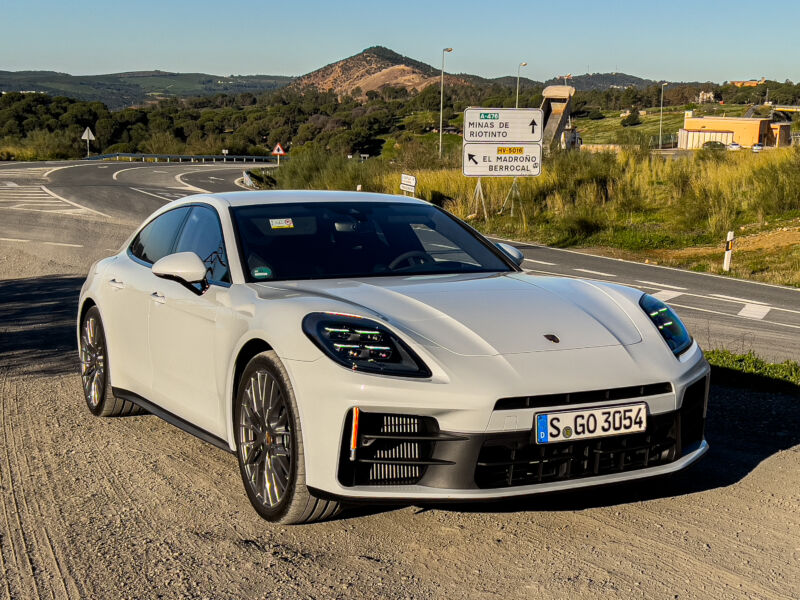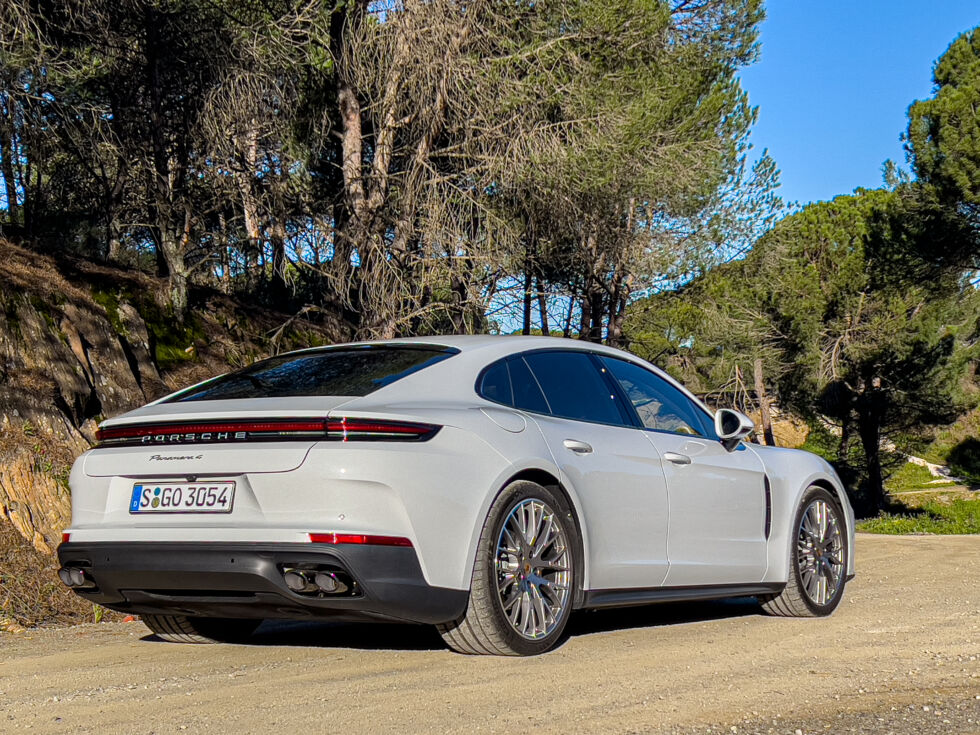
SEVILLE, Spain—Once upon a time, Porsche just made two-door sports cars. Then the 21st century happened. People started to get fickle and demand things like practicality and comfort as well as good handling and soild engineering. Preferring to stay in business, Porsche recognized this market shift and since 2003 has bolstered its lineup, first with SUVs, then in 2009 with the Panamera sedan.
That sedan is now in its third generation, and late last year, we visited its factory in Leipzig to get a sneak preview of the prototype. Now, the new Panamera has gone into production, and we spent a day driving a pair of models on the road and track ahead of the car's arrival in the US this summer.
Looks-wise, the third-gen Panamera closely resembles the outgoing model to the extent that it has the exact same exterior measurements: 198.8 inches (5,052 mm) long, 76.3 inches (1,937 mm) wide, and 56 inches (1,423 mm) tall. However, it will only be offered as a five-door hatchback—the Sport Turismo variant is no more, we're told.

The design looks a bit sharper than the older car's, with more pronounced fenders over the wheel and steeply raked LED matrix headlights. At the back, the retractable rear wing is a split-piece affair that pops out and then extends above a certain speed threshold. Keen eyes will also see additional air ducts at the front to better cool the engine bay.
Powertrains
The Panamera was the first Porsche to sport a hybrid powertrain, ignoring, of course, the Lohner-Porsche Semper Vivus of 1899. In 2016, Porsche put a plug-in hybrid powertain into the Panamera for the first time, and it will eventually offer a total of four different PHEV powertrains for the 4th-gen car. It's only offering one at launch, though, and it's the Panamera Turbo E-Hybrid. You'll know you're looking at a Panamera Turbo because of the distinctive "Turbonite" colored badge and accents, and pedants will be pleased to know that this car does indeed feature forced induction.
In fact, the 4.0 L V8 uses a pair of turbochargers, now monoscroll, rather than the twin-scroll turbines in the old car. This allows the car to heat the catalytic converter more quickly and operate at higher exhaust gas temperatures. There's no more cylinder deactivation; instead, Porsche's engineers have used variable valve lift and opening to cope with different engine loads.
There's an all-new 188-hp (140 kW), 332 lb-ft (450 Nm) electric motor for the PHEV powertrain, which now lives inside the eight-speed dual clutch PDK transmission (which powers all four wheels) rather than downstream of it. Total power and torque output is 670 hp (500 kW) and 685 lb-ft (935 Nm).
-
A cutaway illustration of the Panamera Turbo E-Hybrid's powertrain.Porsche
-
A cutaway illustration of the Panamera plug-in hybrid battery pack.Porsche
-
A cutaway showing the internals of the Panamera Turbo Hybrid's PDK transmission. Note the electric motor on the far left.Jonathan Gitlin
The electric motor is always coupled to the transmission, and it's only when the car wants to add some internal combustion power that a decoupler closes and engages the V8 as well. Under braking, the electric motor can regenerate up to 88 kW before the friction brakes take over. Top speed is 87 mph (140 km/h) under electric power alone, or 190 mph (305 km/h) with the V8 also contributing.
There's also a new high-voltage traction battery to go with the new electric motor. Porsche has upped the capacity to 25.9 kWh, which should translate to a meaningful increase in the distance one can drive on electric power alone. Porsche has yet to release official EPA fuel efficiency data, so we can't be specific, but the European WLTP electric-only range is between 76 and 91 km, depending on drive mode, which is about a 75 percent improvement on the previous Panamera PHEV. Recharge times (from 0 to 100 percent) are as low as 2 hours and 39 minutes via the onboard 11 kW AC charger.
The other two powertrains at launch will be the rear-wheel drive Panamera and the all-wheel drive Panamera 4. Both use a 2.9 L twin-turbo V6 gasoline engine, which generates 349 hp (260 kW) and 368 lb-ft (500 Nm), a 10 percent increase in both stats over the outgoing V6 Panamera. Coupled with a new eight-speed PDK transmission, that saves a tenth of a second or two on the 0–60 time—between 4.8 and 5 seconds depending on whether you optioned the Sport Chrono package—and raises the top speed to 168 mph (270 km/h) for the Panamera and 169 mph (272 km/h) for the Panamera 4.
reader comments
83